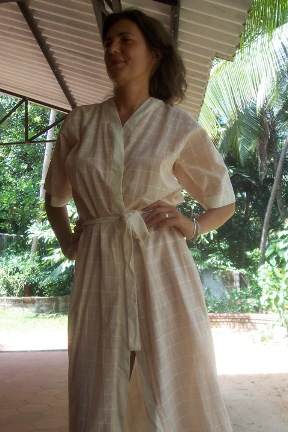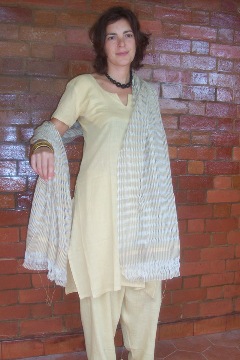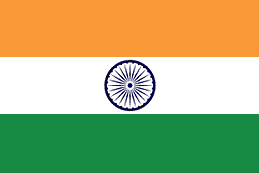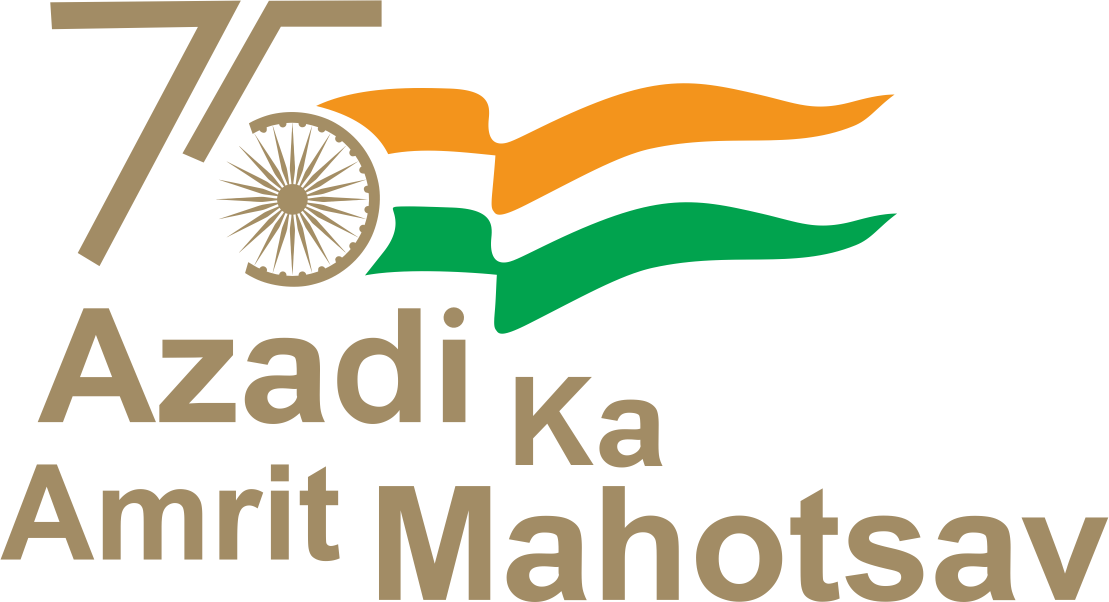Spices Dyed Garments
Ayurveda ("the knowledge for long life) or ayurvedic medicine is a system of traditional medicine orginated in South India and a form of alternative medicine. The earliest literature on Indian medical practice appeared during the Vedic period in India. Over the following centuries, ayurvedic practitioners developed a number of medicinal preparations, surgical procedures, housing, clothing and life style for the treatment of various ailments. Current practices derived (or reportedly derived) from Ayurvedic medicine are regarded as part of complementary and alternative medicine.

One such traditional practice of preparing ayurveda is garments using natural dyes prepared from Spices & Herbs. During the ancient times Spice dyed garments were prepared and exported to China and Mesopotamia in the early periods of Christian era. Historic evidence exists that a piece of cloth adequate to cover the entire body of Queen Victoria 1st was packed in a match box and sent to her as a present from Travancore. This shows that the art and science of cloth making was in its zenith in the earlier periods. Modern India's founding father, Mahatma Gandhi, championed hand-spun cloth and weaving. In olden days, cotton fabrics were dyed with plant extracts to be used as eco-friendly and natural commodity. But when modern dyeing technology with chemical dye evolves, the ethnic knowledge of herbal dyeing vanished from the scenario slowly. Now all the textile materials are using chemical dyes for coloring. But it is reported that many side effects including skin allergy, skin allergic conditions, Asthma etc are occurring.
Spices dyed garments uses a dying method wherein the Spices, Herbs and other indigenous process stipulated in Ayurvedic system so as to achieve maximum eco-friendly and clinical effectiveness perfection in the cloth. It is to be clarified here that when dying cotton fabrics with extracts from medicinal plants, vegetables and other herbs are practiced in many part of India for preparing cloth dyed with non- chemical colors, the Ayurvedic dyeing technology using spices and herbs evolved as a part of this experiment is using basically medicinal plants and biological products described in Ayurvedic system of medicine. It is because of this reason the cloth dyed with extract from medicinal plant is christened as "Ayurvedic Handloom" and "Sugandha vastra".
To sustain the natural colours and aroma in the clothes, each Spices dyed garments products have been developed as per the instruction written by Asta Medicos, Arya Medicos, Ayurveda medicos etc. The finished product is organic, completely free of synthetic chemicals and biodegradable. It is believed that the skin absorbs the medicinal properties of the herbs and this helps treat a broad range of ailments.

dyeing process using Spices and herbs:Every step in the preparation of Sugandha vastra cloth and clothing is carefully and precisely controlled. Sugandha vastra, as a branch of ayurveda, begins with 100% organic cotton that has been hand loomed � no chemical additives to prepare the cotton fibers for spinning and weaving, no chemical finishes. The organic cotton yarn or fabric is then dyed in a carefully controlled mixture of Ayurveda dyes depending upon the disease or ailment being treated. Dyes for Sugandha vastra cloth typically contain between 40 and 60 specifically blended and carefully prepared medicinal herbs, plants, flowers, roots and barks. The temperatures of the dyes, the duration and number of the dye soaks, the blend of herbs, and even the equipment used are carefully controlled. The entire process is organic. The cloth is bleached with cow's urine, which has high medicinal value. The dyeing gum too is herbal. It does not pollute like synthetic dye. And the waste is used as bio manure and to generate bio gas. It is proved that cow's urine to be highly beneficial in balancing an individual's "doshas" or basic constituents of an individual's physiology and psychology, strengthening the immune systems and as an elixir in giving life.

How Spices dyed garments works: When the tiny micro-capsules Ayurveda medicines of Spices dyed garmentscome into contact with body heat, they slowly release their chemical payloads which can contain fragrances or skincare lotions or other chemicals which might have some topical beauty or medicinal value to the skin that comes into contact with the micro-encapsulated fabric. By coming in contact with Sugandha Vastra, the body loses toxins and its metabolism is enhanced.
Ayurvedic practicioners says that when medicated clothes used, a medicated environment will be produced within the space between skin and the clothes, hereby producing a micro-environment of medicinal action. This in turn, by the potency of the medicines used, its effects will be transferred to the skin, which will create a synergetic effect for providing cure to the disease. Thus,Spices dyed garments, will act as an instrument to accelerate the curing action.


Benefits of Spices dyed garments:
To transform natural fibre cloth into a value added product
An effective instrument for curative treatment which is totally eco-friendly.
By providing an eco-friendly and ayurvedic focus to the traditional handloom cloths, new paths are created for new marketing possibilities for the handloom sector in national and international markets.
India is a very important tourist destination worldwide, especially Ayurvedic tourism, to promote the development of handloom industry in tandem with the rapid development of Ayurvedic tourism. (So as to instrumentalise handloom sector as a symbiotically integrating factor in the process of tourism development and growth of Ayurvedic system.)
To give a new life and eco-friendly orientation to the handloom sector and handloom products through a sustainable development technology [production of medicinally effective handloom products] and making such products as a component of promoting Ayurveda.
To promote an opening for women empowerment through Sugandha Vastra [as women folk consist of more than 70% of handloom weavers in India]
To promote Ayurvedic handloom so as to increase the income and there-by mitigate the poverty among Women weavers through creating eco-friendly value added products.
To promote medicinal plant cultivation so as to provide income and employment opportunities to different segments of people (including tribal communities)
Sustainability As the Ayurvedic handloom products are eco-friendly and clinically beneficial, the ultimate purchase price of the product is almost three fold more than chemically colored cloth. The additional economic gain accruing from the enhanced price and income benefit can be transferred to the weavers and there-by more income can be provided to them resulting in a conspicuous reduction in their poverty condition. Therefore, not only the Sugandha Vastra is going to be a win-win product for India, it is also going to be a notable contribution from India to other countries where handloom cloth making is a part of their traditional industry system. Sugandha Vastra is focusing at multifaceted benefit to human kind including robust benefit to the weavers who are poorest of the poor.







